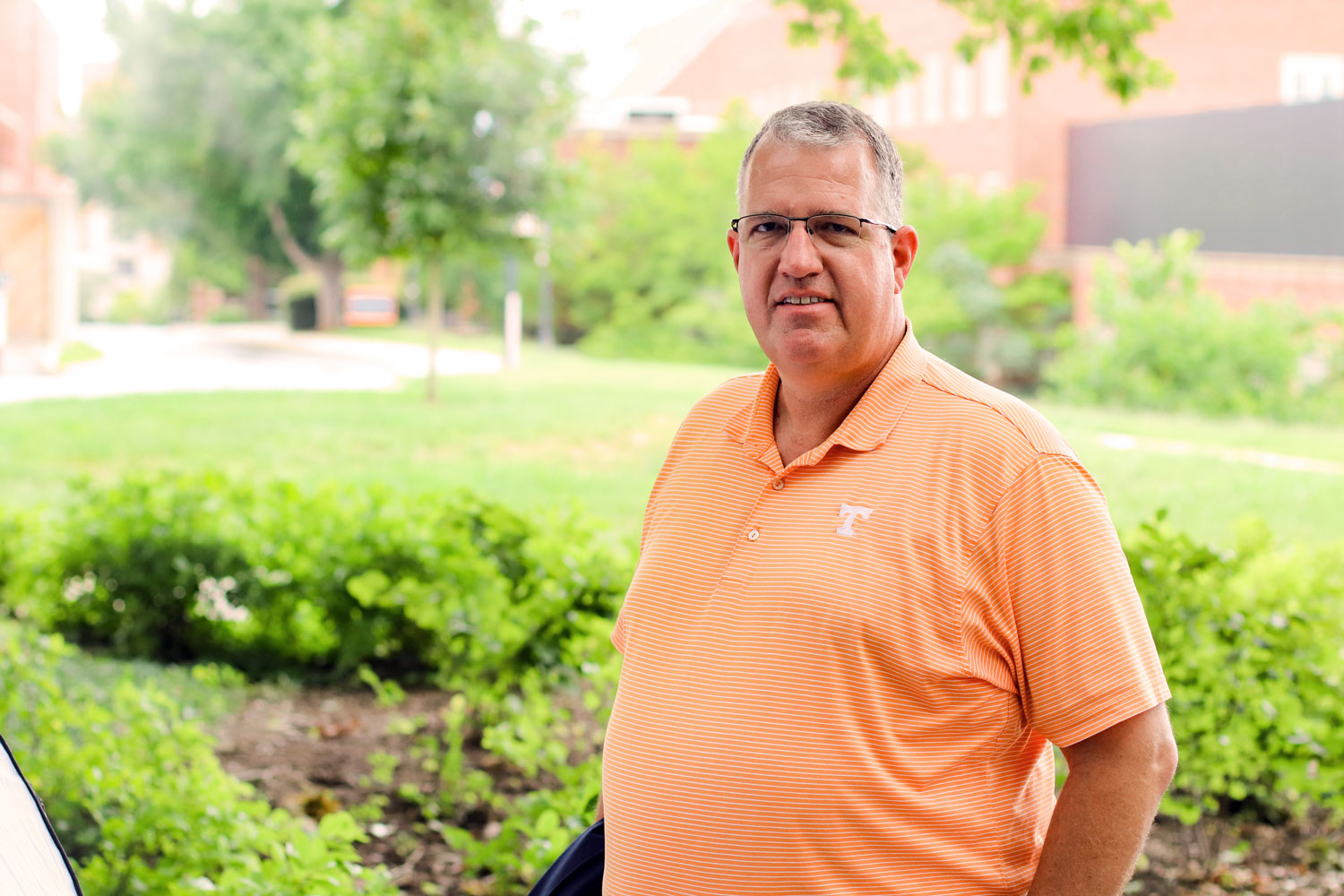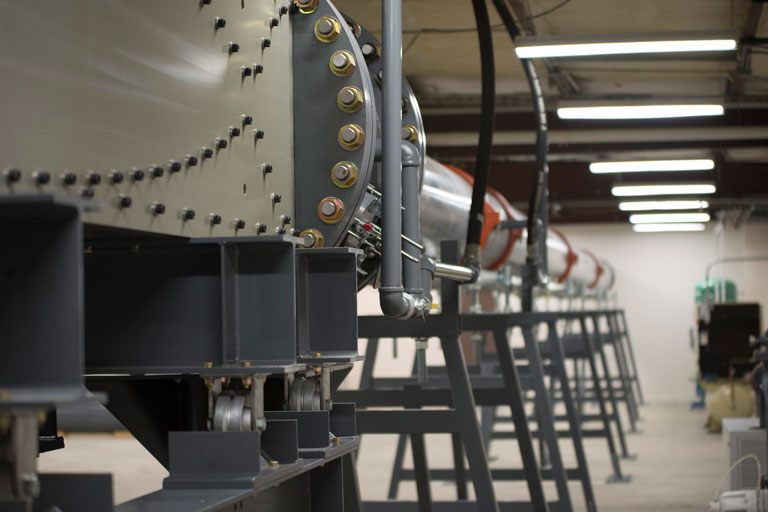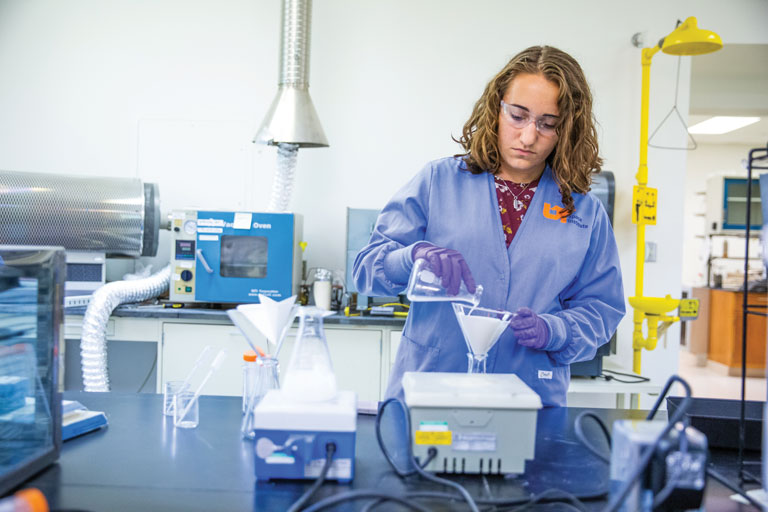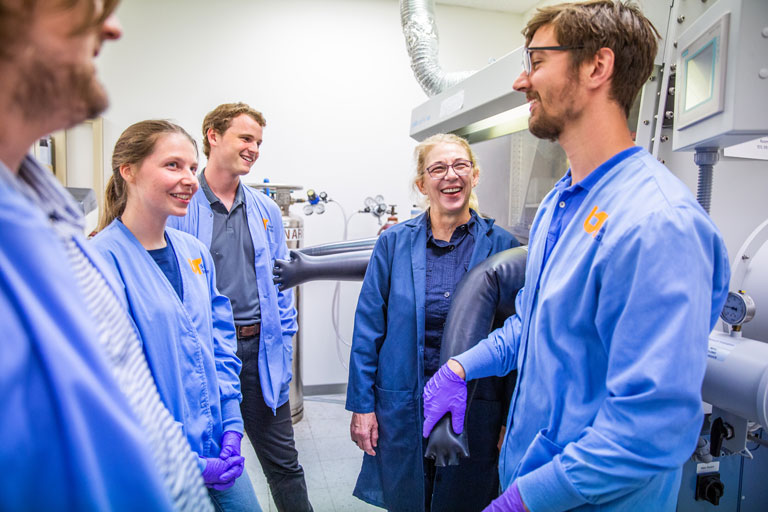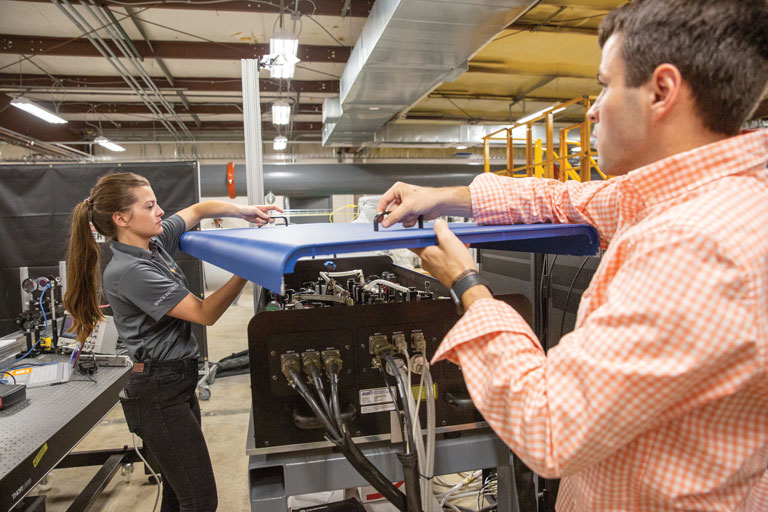There are goals, and then there are ambitions.
By David Goddard. Photography by Randall Brown and Jessica Tezak.
The difference between the two is that ambitions are typically things that you’d love to see happen in your wildest dreams, while goals are tasks that you check off as you accomplish them.
So, when new UT Space Institute Executive Director John Schmisseur says of planned growth, “If all goes according to plan, 10 years from now people will be hunting for parking on our campus,” it sounds like a lofty ambition. For Schmisseur, however, it is a goal, and it will be checked off and accomplished.
Since 1964, UTSI has helped the scientific community take flight, from aviation breakthroughs to research that impacts areas as diverse as the fight against cancer and improving communications.
Fittingly for someone whose background is in propulsion and aviation, Schmisseur has plans to help the economy of the entire region move forward and take flight.
For starters, Schmisseur, who was the H. H. Arnold Chair at UTSI from 2014 to 2022, would like to draw industry from the Huntsville, Alabama, area into southern Tennessee to fulfill future needs and help the university meet its mandate.
“I’d like to develop an institutional vision that considers the full spectrum of research, education, and technology development needs of southern Middle Tennessee, and by extension our entire state,” Schmisseur said. “By identifying and seeking to understand the needs of our communities and technology-intensive industry in our part of the state, we can strive to ensure that UTSI is a catalyst for economic growth and fulfills UT’s mission as the state’s land-grant university.”
While pointing out that UTSI’s current strength is research-intensive graduate education, he says it can build for the future by using the draw that the Huntsville area has for prospective employees.
“We have to also recognize that many Tennesseans are drawn to jobs in Huntsville, and we want to ensure that they have a full spectrum of educational options to prepare them for the jobs they seek available within our region,” said Schmisseur. “I’d like to see us expand our role in serving the people of our region through more accessible graduate education options, professional development courses, and a greater integration and partnership with the other educational institutions in our part of the state.”
Getting there will of course necessitate a detailed plan, and he has already begun thinking about what he hopes to see implemented—and, perhaps just as important, who should share in the vision.
Schmisseur says he wants input from all of UTSI’s key stakeholders, including the Arnold Engineering Development Complex at nearby Arnold Air Force Base, the Tennessee Valley Authority, local governments, and communities in the area.
One of the ways he hopes to make certain that faculty are positioned and supported to be leaders in their given fields is by ensuring that they maintain a strong presence in highly competitive programs like those established by the DOD and the National Science Foundation.
As an example of current successes, he noted how UTSI and UT have, in a few short years, gone from having a minimal presence at a DOD review of defense-related research to having five distinct teams in the most recent period of review.
As the institute’s research progresses, Schmisseur anticipates that the new Huntsville office will be instrumental in helping faculty identify other government and industry partners to translate that work into improving emerging aerospace systems. The office has contributed to new partnerships with the US Army and private entities like Lockheed Martin, which has sponsored multiple projects at UTSI and on the UT Knoxville campus.
Here again, being near both the Arnold Engineering Development Complex and the massive aerospace and defense presence in Huntsville is an advantage that he wants to leverage into opportunities for faculty at UTSI.
“We have the opportunity to engage scientists and engineers from a variety of organizations in person and host them in our laboratories without the need from them to travel beyond a short drive,” Schmisseur said. “UTSI is the only place where the government, industry, and academia can get together to observe a preliminary risk-reduction test and still be home in time for dinner.”
Asked what makes UTSI an attractive potential landing spot for people engaged at all levels of research, he was quick to respond about all the things that set UTSI apart from the rest.
UTSI is a great place because we offer the best combination of nationally recognized and relevant research with the small campus environment that fosters community, where students and faculty frequently interact. UTSI has a great small-campus family feeling, and it’s great to work in a place where people know and care about you.”
From an internally focused standpoint, Schmisseur notes the success UTSI has had with hypersonics and says he wants to support, broaden, and grow its research base over the next decade to have four to five research areas operating at that level.
“As we expand our research base, I’m very excited about the possibility of hosting satellite laboratories from some of the world-leading research groups at UT—particularly in advanced manufacturing and materials,” he said.
Doing so would be yet another way to bring significant growth in collaborations and partnerships with UTSI, UT’s Knoxville campus, and industry, with a goal of having a major industry partner sponsoring a jointly staffed laboratory near UTSI before the end of the decade.
“I’d like to see more industrial collaborations in the near future,” Schmisseur said. “But more importantly, in the long term we want to see new engineering centers for several of the major companies opened in southern Middle Tennessee that were drawn to our state because of the opportunity to easily work with UT.”
UTSI’s opening near Tullahoma gave the region a boost almost six decades ago and provided several government entities a research partner in the area. If Schmisseur’s ideas go according to plan, the next 60 years could bring changes that boost the area beyond anyone’s wildest dreams—even his own.
